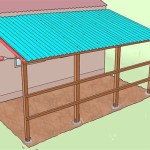Creating A Functional And Stylish Garage Workbench
The garage workbench stands as a cornerstone for homeowners engaging in projects ranging from simple repairs to elaborate woodworking. A well-designed workbench enhances productivity, improves organization, and can even elevate the aesthetic appeal of the garage space. This article explores workbench ideas that prioritize both functionality and style, offering practical solutions for diverse needs and preferences.
Optimizing Space and Layout
Effective space utilization is paramount when designing a garage workbench. Garages often serve multiple purposes, requiring a workbench that minimizes its footprint while maximizing its utility. Considerations should include the available floor space, the height of the ceiling, and the overall flow of movement within the garage.
One strategy for optimizing space is the implementation of a folding workbench. These workbenches can be mounted to the wall and easily folded down when needed, providing a substantial work surface that disappears when not in use. This design is especially suitable for smaller garages or shared spaces where flexibility is key.
Another approach involves utilizing vertical space. Tall shelving units positioned above the workbench can store tools, materials, and equipment, keeping the work surface clear and organized. Pegboards, installed on the wall behind the workbench, offer a versatile solution for hanging frequently used tools, ensuring they are readily accessible.
The layout of the workbench itself should be carefully considered. A U-shaped workbench, for instance, can wrap around a corner, providing ample workspace while efficiently utilizing available room. This configuration allows for different work zones, such as an area for cutting materials, another for assembling components, and a dedicated space for precision work.
Mobile workbenches offer another advantage, allowing for relocation within the garage or even outside, depending on the project. These workbenches are typically equipped with heavy-duty casters that provide easy maneuverability, and locking mechanisms to ensure stability during use.
Material Selection and Durability
The materials used in constructing a garage workbench significantly impact its durability, stability, and overall lifespan. Choosing the right materials is crucial for creating a workbench that can withstand the demands of various projects and environmental conditions.
Solid wood is a popular choice for workbench tops, offering excellent strength and a natural aesthetic. Hardwoods like maple, oak, and birch are particularly well-suited for this purpose, as they are resistant to dents, scratches, and moisture. However, solid wood can be more expensive than other options and may require periodic sealing to prevent warping or cracking.
Laminated wood, such as plywood or oriented strand board (OSB), provides a cost-effective alternative to solid wood. These materials are engineered for strength and stability, offering a smooth and consistent surface. When using laminated wood for a workbench top, it is advisable to choose a high-quality grade with a durable veneer or laminate coating to protect against wear and tear.
Metal workbenches offer exceptional durability and are particularly well-suited for heavy-duty tasks. Steel is a common material for metal workbenches, providing a robust and stable platform for supporting heavy tools and equipment. Metal workbenches are often powder-coated to protect against rust and corrosion, ensuring long-lasting performance.
The frame of the workbench should also be constructed from durable materials. Solid wood, steel, or heavy-duty plastic are all viable options. The frame should be designed to provide adequate support for the workbench top and any additional storage components. Reinforcements, such as cross braces and gussets, can further enhance the strength and stability of the frame.
When selecting materials, it is important to consider the specific types of projects that will be undertaken on the workbench. For instance, a woodworker may prioritize a solid wood top for its workability, while a mechanic may prefer a metal top for its resistance to oil and chemicals. Ultimately, the choice of materials should reflect the intended use and the desired level of durability.
Integrating Storage and Organization
A cluttered workbench can hinder productivity and make it difficult to find the tools and materials needed for a project. Integrating effective storage and organization solutions into the workbench design is essential for maintaining a clean and efficient workspace.
Drawers are a fundamental component of workbench storage, providing a convenient way to keep tools, hardware, and small parts organized and easily accessible. The number and size of drawers should be tailored to the specific needs of the user, with larger drawers for storing power tools and smaller drawers for organizing fasteners and hand tools.
Cabinets offer another storage option, providing enclosed space for larger items and materials. Cabinets can be mounted under the workbench or on the wall above, depending on the available space and the desired layout. Adjustable shelves within the cabinets allow for customization to accommodate items of varying sizes.
Pegboards are a highly versatile tool storage solution, providing a customizable system for hanging tools of all shapes and sizes. Pegboards can be mounted on the wall behind the workbench or on the sides of the workbench frame. A wide range of pegboard hooks and accessories are available, allowing for optimal organization and accessibility.
Dividers and organizers within drawers and cabinets can further enhance organization. These inserts help to separate tools and materials, preventing them from becoming jumbled and making it easier to find what is needed. Custom-built dividers or commercially available organizers can be used to create a tailored storage system.
Lighting is an often overlooked aspect of workbench organization. Adequate lighting is essential for performing detailed work and preventing eye strain. Task lighting, such as an adjustable LED lamp, can be positioned directly over the work surface to provide focused illumination. Overhead lighting can also be used to brighten the entire workbench area.
Power outlets integrated into the workbench design provide a convenient way to plug in power tools and equipment without having to run extension cords across the garage. Multiple outlets should be installed and strategically positioned to accommodate various tools and accessories.
Enhancing Style and Aesthetics
While functionality is the primary consideration in designing a garage workbench, incorporating elements of style and aesthetics can enhance the overall appearance of the garage and create a more enjoyable workspace.
Choosing a cohesive color scheme can create a unified and visually appealing workspace. Neutral colors, such as gray, white, and black, are often used for workbenches, as they provide a clean and understated backdrop for tools and materials. Accents of bolder colors can be added through accessories, such as toolboxes and storage containers.
Finishing the workbench with a durable and attractive coating can enhance its appearance and protect it from wear and tear. Polyurethane finishes are a popular choice for wood workbenches, providing a clear and protective layer that enhances the natural grain of the wood. Powder coating is a durable and attractive option for metal workbenches, providing a smooth and uniform finish that is resistant to scratches and corrosion.
Adding personal touches to the workbench can make it a more inviting and inspiring space. This could include displaying artwork, photographs, or other decorative items that reflect the user's interests and personality. A well-maintained and organized workbench is a testament to the user's dedication and craftsmanship.
Incorporating natural elements, such as plants or wood accents, can add warmth and character to the garage workspace. A small potted plant on the workbench or a wooden tool rack can bring a touch of nature into the often sterile environment of the garage.
The design of the workbench itself can contribute to its overall style. A workbench with clean lines and a minimalist design can create a modern and sophisticated look, while a workbench with rustic details can evoke a more traditional and handcrafted feel. The style of the workbench should complement the overall aesthetic of the garage and reflect the user's personal taste.
Ultimately, creating a functional and stylish garage workbench requires careful planning and attention to detail. By optimizing space, selecting durable materials, integrating effective storage solutions, and enhancing the aesthetics, homeowners can create a workspace that is both productive and enjoyable.

Build A Basic Workbench Tylynn M

14 Super Simple Workbenches You Can Build The Family Handyman

11 Diy Workbench Ideas For Your Garage Or Office Simplified Building

How To Build A Rolling Workbench Follow This Simple Diy Plans

Garage Workbench Plans Google Search Work Bench Basement

How To Build The Ultimate Diy Garage Workbench Free Plans

How To Build A Rolling Workbench Follow This Simple Diy Plans

How To Build A Diy Workbench Super Simple 50 Bench

And Easy Garage Workbench 3 Steps Instructables

Brilliant Ways To Organize The Garage Blue I Style Creating An Organized Pretty Happy Home
Related Posts








